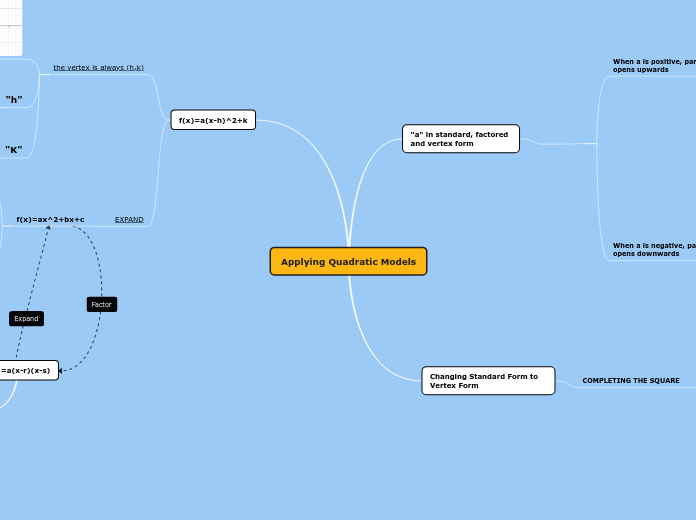af Rachel Yang 4 år siden
349
Applying Quadratic Models

af Rachel Yang 4 år siden
349

Mere som dette
c is the "y intercept"
the parabola moves "k" units up or down
value of "h" is the axis of symmetry
the parabola moves "h" units left or right.
"h" is negative, parabola moves rigt
"h" is positive, parabola moves left
When a is negative, parabola opens downwards
a<0
Parabola is reflected across the x axis
When "a" is negative and
When "a" is negative and a>1 parabola is stretched then reflected
red parabola is y=-x^2
When a is positive, parabola opens upwards
0
Parabola is compressed vertically by a factor of "a"
the greater the value of "a" the more compressed
red parabola is y=0.5x^2
a>1
Parabola is stretched vertically by a factor of "a"
the greater the value of "a" the more stretched
red parabola is y=2x^2
blue parabola is y=x^2